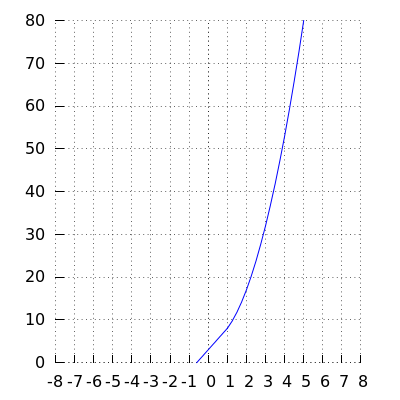Functions: Introduction to functions
 Continuity
Continuity
Continuity
Let #f# be a real function defined on an open interval around a point #a#.
If #\displaystyle \lim_{x\to a}f(x) =f(a)#, then #f# is called continuous at #a#. If not, then #f# is called discontinuous at #a#.
If #f# is continuous at every point of an open interval #\ivoo{c}{d}#, then #f# is called continuous on #\ivoo{c}{d}# .
In other words, a function is continuous if the graph can be drawn without lifting the pen from the paper.
If #a# is a point of #\ivoo{c}{d}# such that #\displaystyle \lim_{x\uparrow a}f(x) =f(a)#, then #f# is called left continuous at #a#.
If #a# is a point of #\ivoo{c}{d}# such that #\displaystyle \lim_{x\downarrow a}f(x) =f(a)#, then #f# is called right continuous at #a#.
A point must meet both conditions in order to establish that #f# is continuous at #a#.
We show a function that is continuous everywhere except at the point #0#. This is due to a jump in the graph of #f#. The function is the Heaviside function #H# defined by #H(x) = 0# if #x\lt0# and #H(x) = 1# if #x\gt0#. The graph of this function shows a jump at #0# and so is discontinuous there.

The function #f# is left continuous at #x=1# :
\[
\begin{array}{rcl}
\displaystyle\lim_{x\uparrow1}f(x)&=&\lim_{x\uparrow1}( 5x+3)=5+3=8=f(1)\end{array}\]
The function #f# is right continuous at #x=1#:
\[\begin{array}{rcl}\displaystyle\lim_{x\downarrow1}f(x)&=&\lim_{x\downarrow1} (3 x^2+5)=3+5=8=f(1)\end{array}\]
Since #f# is both right continuous and left continuous at #1#, it is continuous at #1#.
Below the graph of #f# is drawn. It has no jump at #1#.


Or visit omptest.org if jou are taking an OMPT exam.



